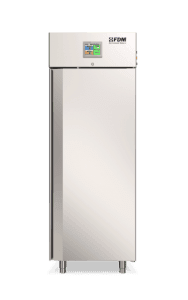
Regardless of the material or product to be tested, humidity is a key factor for the success of a good climatic test. The humidity chamber must be chosen while taking into account our needs and weighing well all the factors involved.
In this article, we will examine them in detail.
Why is Humidity Important in Climate Tests?
Scientists define humidity as the amount of water or water vapor contained in the atmosphere, in a substance or in a body.
As common experience also teaches us, humidity is a parameter closely related to temperature and can significantly affect the perceived temperature and, in general, the effects that a given environment produces on people and things.
We speak of relative humidity when it is account considering the temperature of a given environment and saturation humidity is defined as the maximum quantity of water vapor that can be contained at a given temperature, i.e. the maximum value of relative humidity that can be reached in a chosen environment.
Taking a material into the humidity chamber to the degree of humidity of saturation is often necessary to observe how it reacts in the so-called “worst-case scenario”, ie when the temperature and humidity values
The humidity test in the humidity chamber is, for example, crucial in the construction industry. Most of the damage that we observe in our buildings, in fact, is not due so much to the temperature as to the action of humidity that infiltrates the concrete and other building materials, causing permanent damage to the structures.
Perform
Climate Stress
Discover the new series of Climate Chambers for controlled climate testing
Temperature and Humidity Chamber: How Many Types Are There?
The humidity chamber is actually a meta category that includes several types of climatic chambers. This is why we speak of temperature and humidity chambers because these two factors are present in almost all chambers on the market.
The only exception concerns the Thermostatic Chamber, the only one not having a parameter to regulate humidity.
On the other hand: climatic chambers, growth chambers and environmental chambers are all temperature and humidity chambers because they allow you to adjust both parameters with significant differences between one model and another.
Each of these chambers has specific applications and, consequently, particular temperature and humidity ranges. But they can also be modified to meet special needs, let's see a case study.
Case Study: the Temperature and Humidity Chamber for the University of Turin
We have said that humidity is a key factor to keep under control with regard to inorganic compounds such as building materials. For organic compounds, it is even more decisive.
In September 2021, we at FDM - Environment Makers built a growth chamber for tree crops appropriately modified for the needs of the laboratories of the University of Turin. Among the parameters on which we intervened, there was precisely the humidity range which was increased from the canonical 80% to 90%.
An increase that may seem insignificant but is instead crucial because some fruit plants, in order to grow and propagate, need values
Illumination Chamber
Discover the latest features of FDM Growth Chambers.
The FDM Temperature and Humidity Chamber
We at FDM - Environment Makers have been working in the sector for over 70 years and are always available to discuss with the customer to offer them a product that takes into account all their needs, just as we did with the researchers of the University of Turin.
If you are looking for a temperature and humidity chamber with specific values, do not hesitate to contact us. Our technicians will be happy to develop a product that meets your needs.
Would you like to receive a quote or do you have questions about the product?
Contact us to receive more information about this Product.



